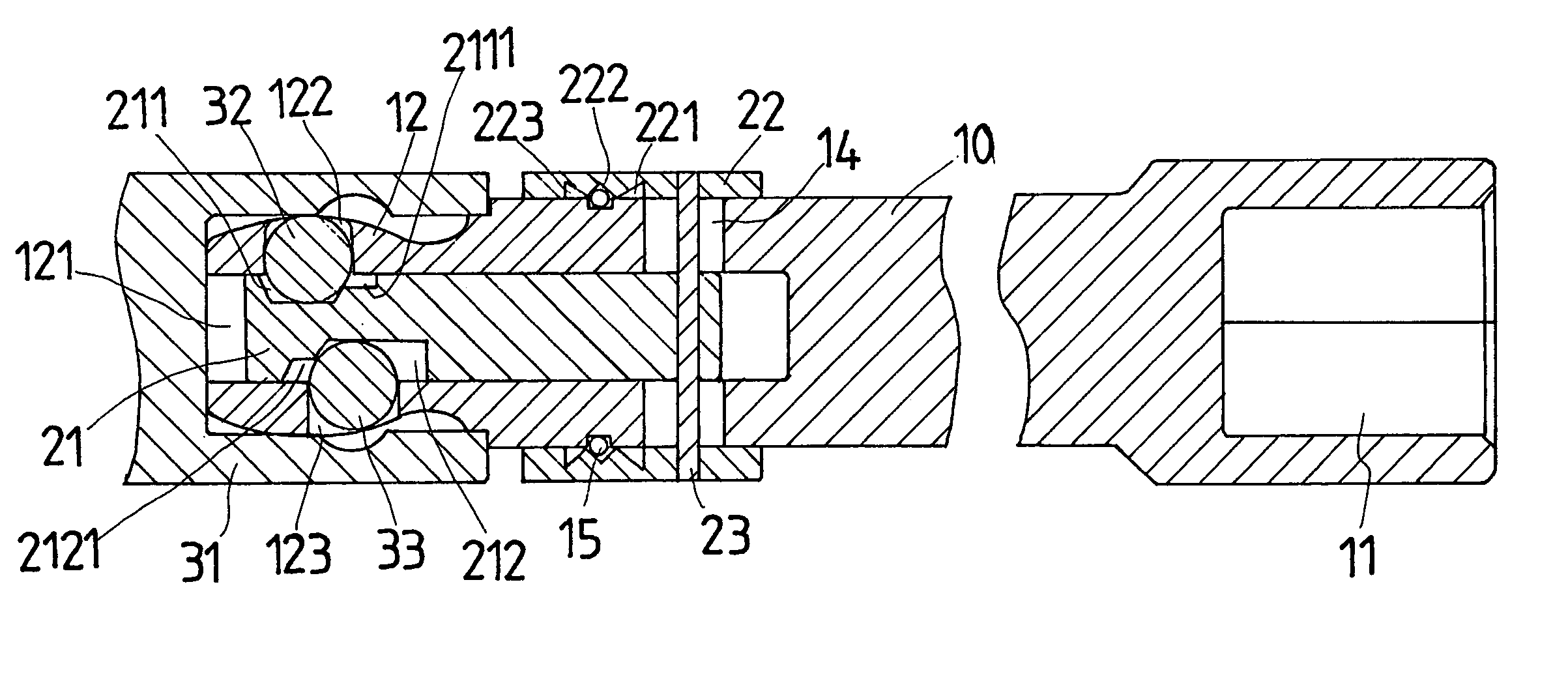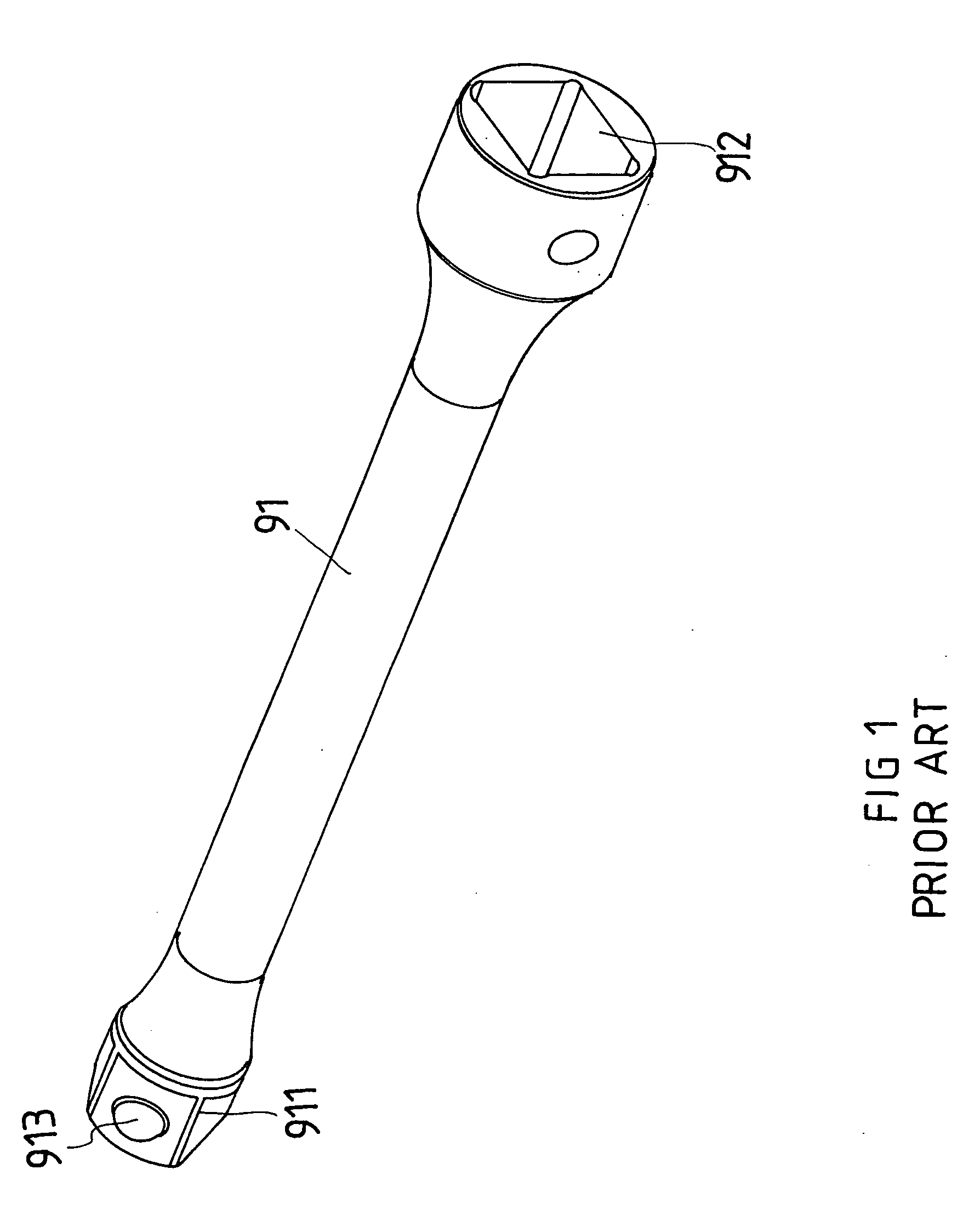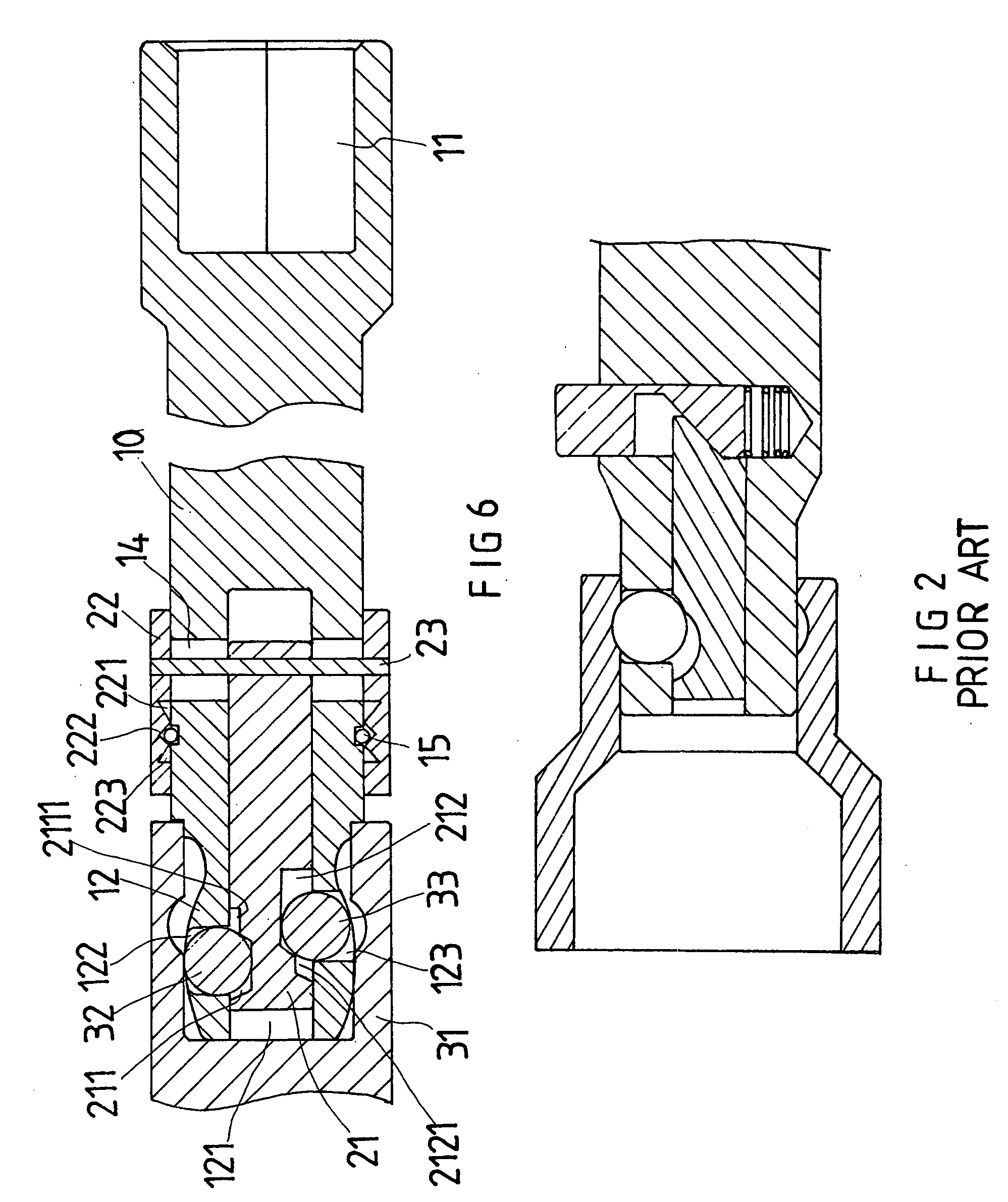Structure of a fixed and turning connecting shaft
a technology of connecting shaft and structure, which is applied in the direction of screwdrivers, wrenches, rotary machine parts, etc., can solve the problems of only working shafts, difficult to reach, and not being able to operate quickly, and achieve the effect of stably positioning capability
- Summary
- Abstract
- Description
- Claims
- Application Information
AI Technical Summary
Benefits of technology
Problems solved by technology
Method used
Image
Examples
Embodiment Construction
[0015] Referring FIGS. 5 to 8, the present invention of an Improved Structure of a Fixed and Turning Connecting Shaft mainly comprises a connecting shaft 10 for a pneumatic tool (not shown in the Figs.), and a speedily assembly 20 for connecting to the connecting shaft 10 at a suitable location.
[0016] The connecting shaft 10 is in longitudinal bar shape, its one end having a fixed connecting part 11 for connecting to a pneumatic tool with driven power, another end is a connecting part 12 for sleeving a socket 31, a shoulder 13 in corresponding to the socket 31 is disposed between the connecting part 12 and the connecting shaft 10. The fixed connecting part 11 is a hole itself for the axial part (not shown in the Figs.) of the pneumatic tool to connect with. The connecting part 12 is curve in shape, an axial hole 121 is disposed inside along its axis, ball holes 122 and 123 are disposed on each side of the connecting part 12 respectively and are connected with the axial hole 121. Th...
PUM
 Login to View More
Login to View More Abstract
Description
Claims
Application Information
 Login to View More
Login to View More - R&D
- Intellectual Property
- Life Sciences
- Materials
- Tech Scout
- Unparalleled Data Quality
- Higher Quality Content
- 60% Fewer Hallucinations
Browse by: Latest US Patents, China's latest patents, Technical Efficacy Thesaurus, Application Domain, Technology Topic, Popular Technical Reports.
© 2025 PatSnap. All rights reserved.Legal|Privacy policy|Modern Slavery Act Transparency Statement|Sitemap|About US| Contact US: help@patsnap.com



